While you can buy all of your hydroponic nutrients at the store ready to go, creating the nutrients yourself in a DIY fashion is an option. Some people may choose to DIY hydroponic nutrients at home for multiple reasons.
For one, it is a cheaper option. You are only purchasing what is necessary for your hydroponic unit.
When making your own hydroponic nutrients you also are more in control of the growth of your plants.
You can choose how much of each nutrient your plants will get instead of having a preset amount from the fertilizer you bought at the store. Typically, the store-bought fertilizer is treated more as an all-purpose than what you will be creating yourself.
Whether you’re a seasoned hydroponic gardener or just starting out, you won’t want to miss this guide to DIY hydroponic nutrients. So, grab your gloves and let’s get mixing!
- Related: Hydroponics Nutrients Guide
Essential Elements of DIY Hydroponic Nutrients
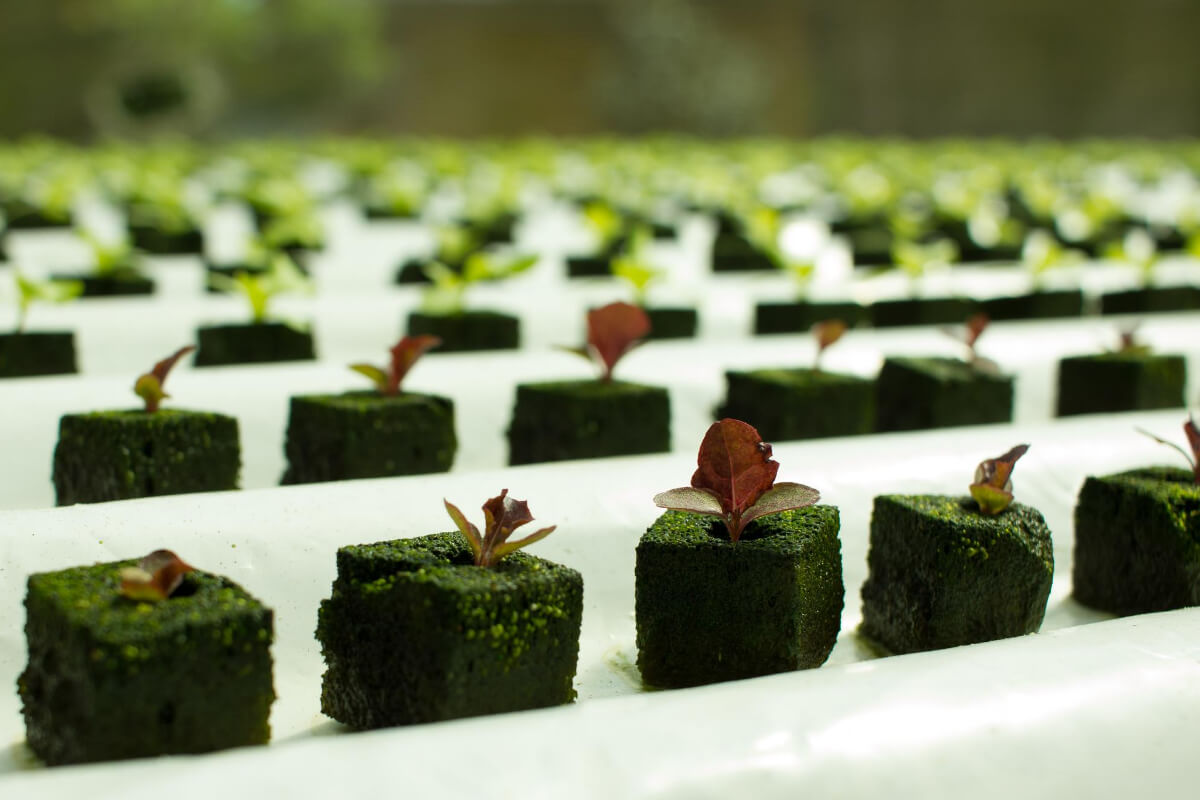
All plants require 13 elements that are split up into macronutrients and micronutrients. Plants need more macronutrients than micronutrients, but all are essential for growth.
In addition to these 13 nutrients, carbon, hydrogen, and oxygen are required for growth but come from the air and water.
Essential Macronutrients for Plant Growth
The essential macronutrients are nitrogen, phosphorus, potassium, calcium, and magnesium. Because these nutrients are the most important, being macronutrients, they need to be taken care of first.
Prioritize feeding your plants these nutrients over any other nutrients. Using a DIY hydroponic nutrient solution, you can add these nutrients to your plants.
Essential Micronutrients for Plant Growth
The essential micronutrients for plants are iron, manganese, copper, boron, zinc, molybdenum, and chlorine. It is important to ensure that your DIY hydroponic nutrient solution has these essential micronutrients.
pH Levels for DIY Hydroponic Formulas
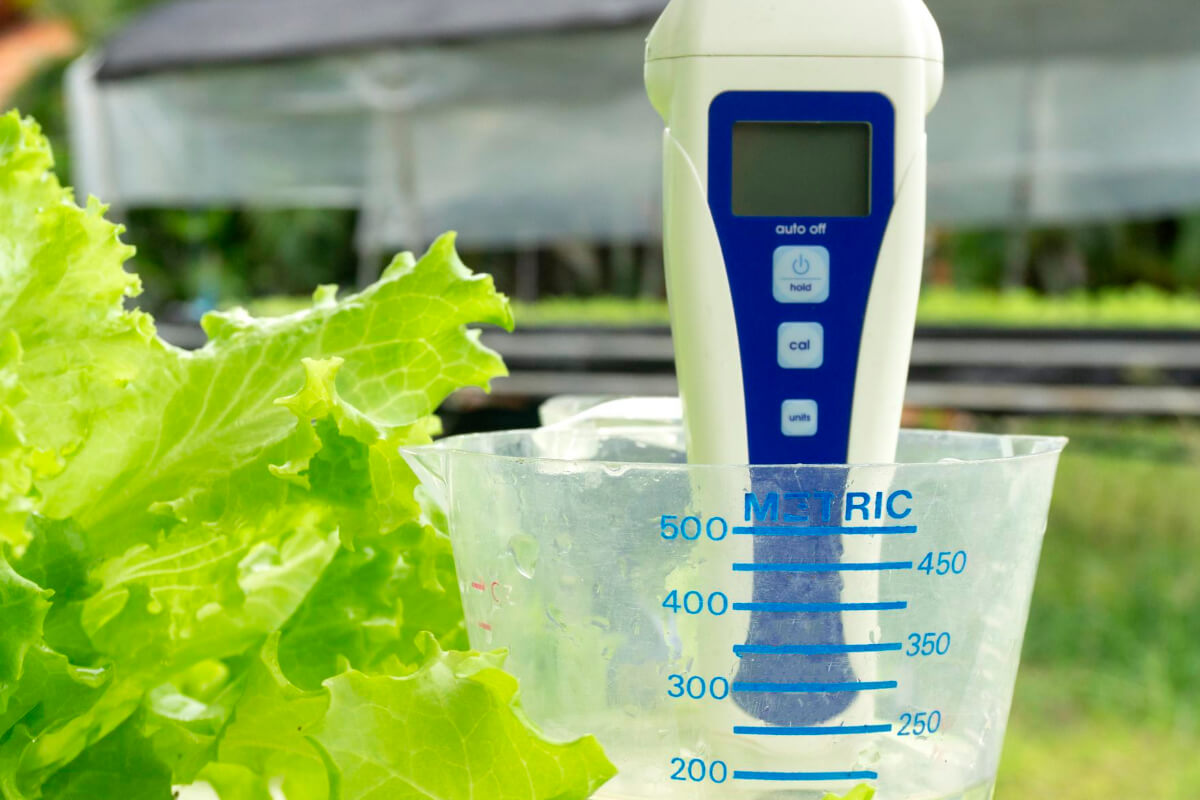
The pH scale runs from 0 to 14. Any number below seven is on the acidic end of the scale, and anything above eight is on the basic, or alkaline end of the scale.
Seven is right in the middle as pH-neutral. Use a pH meter, solution, or strip in your nutrient solution to test your plant’s pH levels. The pH range to be aiming for hydroponic plants is 5.8 to 6.3. Each plant’s pH range could vary slightly so it is important to research your specific plants.
While micronutrients are more available on the lower end of this range, you are more at risk of micronutrient toxicity when the pH levels drop to 5.5 or below.
It is important to have the correct pH because the plant’s roots absorb every nutrient at a different rate depending on the pH level.
Some household products can adjust your pH levels short term. Citric acid can be used to lower your pH levels and baking soda can be used to raise your pH levels.
- Related: Best pH for Hydroponics
Electrical Conductivity of DIY Hydroponic Nutrients
When nutrients dissolve in water, it splits into two ions, one positively charged and one negatively charged. Using an electrical conductivity meter, you can check the fertilizer solutions’ strength.
Electrical conductivity (EC) is shown in siemens per unit area. This can be expressed as mS/cm, dS/m, S/m, etc. Every plant that is grown hydroponically requires a different EC.
For example, the range for basil is 1.0 to 1.6 dS/m, tomatoes are 2.0 to 4.0 dS/m, and peppers are 0.8 to 1.8 dS/m.
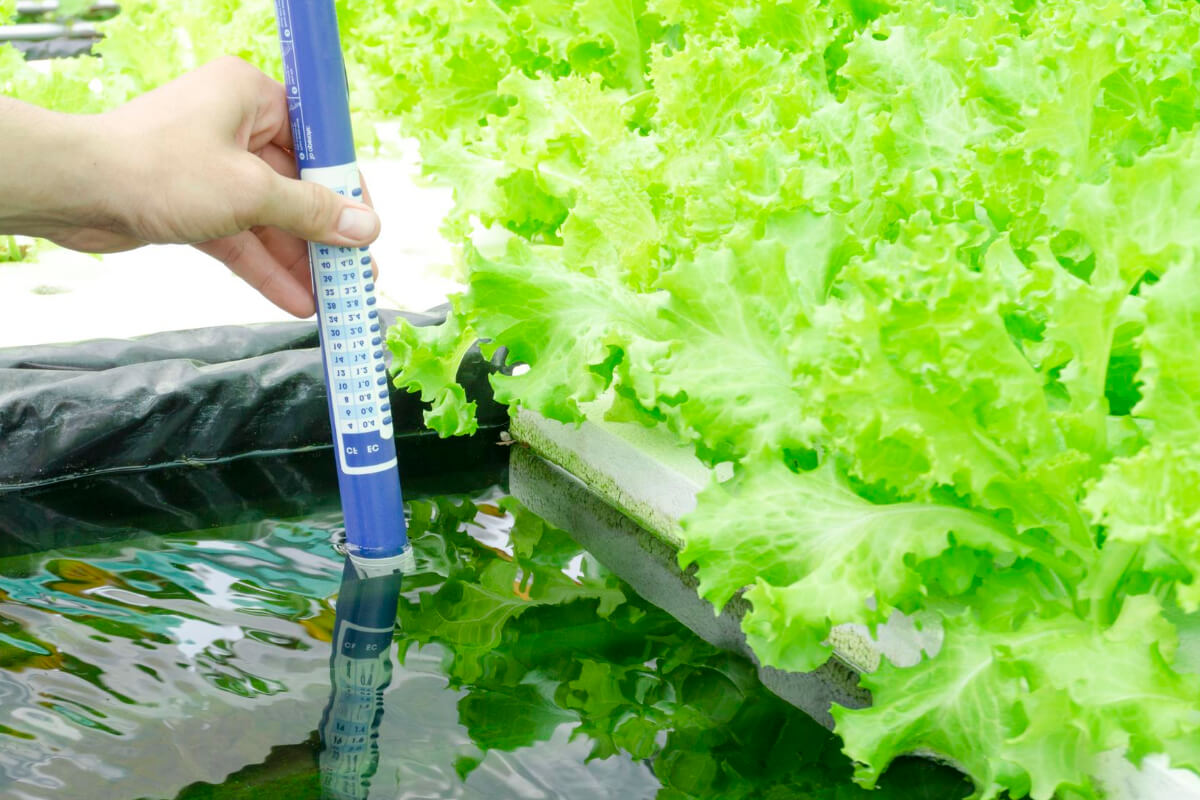
So, why does knowing the electrical conductivity of your hydroponic unit matter?
If your EC levels are too high, it will often look like a nutrient deficiency. Some symptoms might be leaf and stem wilting, tip burn, stunted growth, or dropping leaves.
As a beginner, it might be better to purchase a cheaper EC meter. They can be affordable (in the $15-20 range) and come with a pH meter.
Once you get more advanced in the hydroponics world, you may want to invest in a more expensive EC meter.
One of the more popular EC meters is the Bluelab PENCON conductivity pen, which runs for around $70. This conductivity pen allows you to make temperature readings more accurate by remembering temperature changes.
Equipment to Make DIY Hydroponic Nutrients
Equipment needed:
- 10-gallon bucket with lid
- Long-handled spoon
- Table to work on
- Scale to the 0.001g
- pH testing kit
- EC meter
- Bowls
General DIY Hydroponic Nutrient Formulas
1. Vegetative Stage Nutrient Formula
In the vegetative stage, plants will need more nitrogen. An example of a vegetative stage nutrient formula is:
- Calcium nitrate, 6.0 grams
- Potassium nitrate, 2.09 grams
- Sulfate of potash, 0.46 grams
- Monopotassium phosphate 1.39 grams
- Magnesium sulfate, 2.42 grams
- Fe-chelated trace elements (7%), 0.40 grams
2. Flowering and Fruiting Stage Nutrient Formula
Often, the flowering stage and fruiting stage have the same nutrient formula because these stages are when the plant produces blossoms, fruits, and seeds.
Plants in the flowering or fruiting stage need less nitrogen and more potassium and phosphorus compared to the vegetative state.
Nutrients needed:
- Potassium sulfate, 0.46 grams
- Calcium nitrate, 4.10 grams
- Potassium nitrate, 2.80 grams
- Magnesium sulfate, 2.40 grams
- Monopotassium phosphate, 1.40 grams
- Fe-chelated trace elements (7%), 0.40 grams
3. Chelated Trace Elements
Nutrients needed:
- Iron, 7.0%
- Manganese, 2.0%
- Zinc, 0.40%
- Copper, 0.10%
- Boron, 1.30%
- Molybdenum, 0.06%
How to Mix Your Hydroponic Nutrient Solution
Take your 10-gallon bucket and fill it with pure water. Mix one nutrient at a time in the water. Make sure each nutrient is fully dissolved, then add in the next nutrient. Repeat this process until all nutrients are dissolved.
Before adding your DIY nutrient solution to your hydroponic system, check the pH of your new solution. If the pH level is too high or too low based on the plant, you are planting add pH up or pH down products.
Nutritional Deficiency Symptoms and Treatment Options
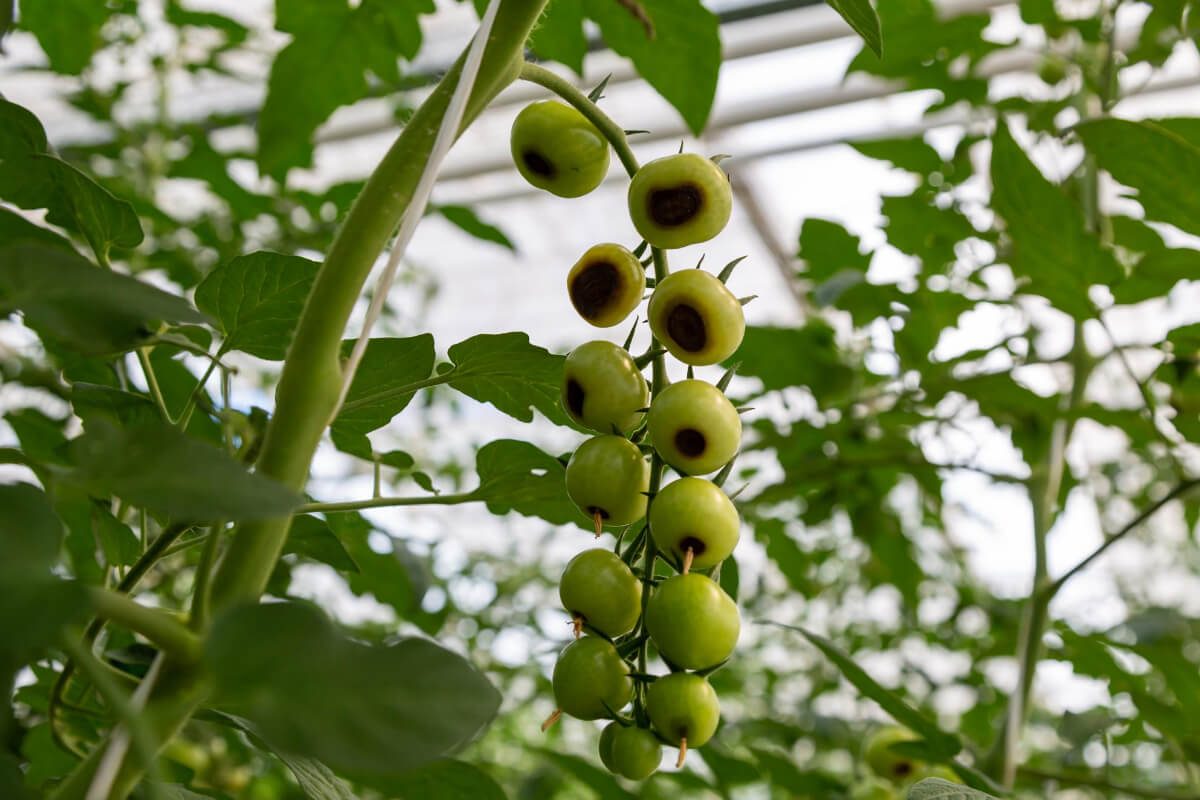
Calcium Deficiency
Calcium deficiencies start in the newest leaves and growth. They can become crinkled with distorted leaves. As the deficiency prevails, the plant growth will be stunted, and the youngest leaves will turn a dark green color.
To treat a calcium deficiency in your hydroponics unit, flush your hydroponics unit with soft or distilled water. Flushing the system with water will remove any salts that get built up over time. Then, add the appropriate nutrients to the solution, such as Cal-Mag.
Most likely, you will see improvement within the next week, especially in the new growth of the plant.
Phosphorus Deficiency
Phosphorus is extremely important in strengthening the plant’s root structure, photosynthesis, cell division, and a variety of other ways.
A phosphorus deficiency can be identified by dark green foliage, stunted growth, red and purple hues on leaves, small roots, and small flowers. These symptoms will first occur in older growth then the newer growth will lack phosphorus by showing dark green veins.
Do not simply add phosphorus to your hydroponics unit to treat a phosphorus deficiency. This could create issues with other nutrients. To cure a phosphorus deficiency, flush out your hydroponics unit with fresh or distilled water that is at the correct pH with the correct nutrients.
Iron Deficiency
Plants only need a small amount of iron, but that small amount is vital for plant health. Iron helps plants get oxygen and color, transports elements through the plant, and enzyme functions.
Because iron helps the plant get oxygen and color, and iron deficiency is shown through the yellowing of newer leaves.
To counteract an iron deficiency, use chelated iron in your hydroponics system. Chelated iron is water soluble and will dissolve.
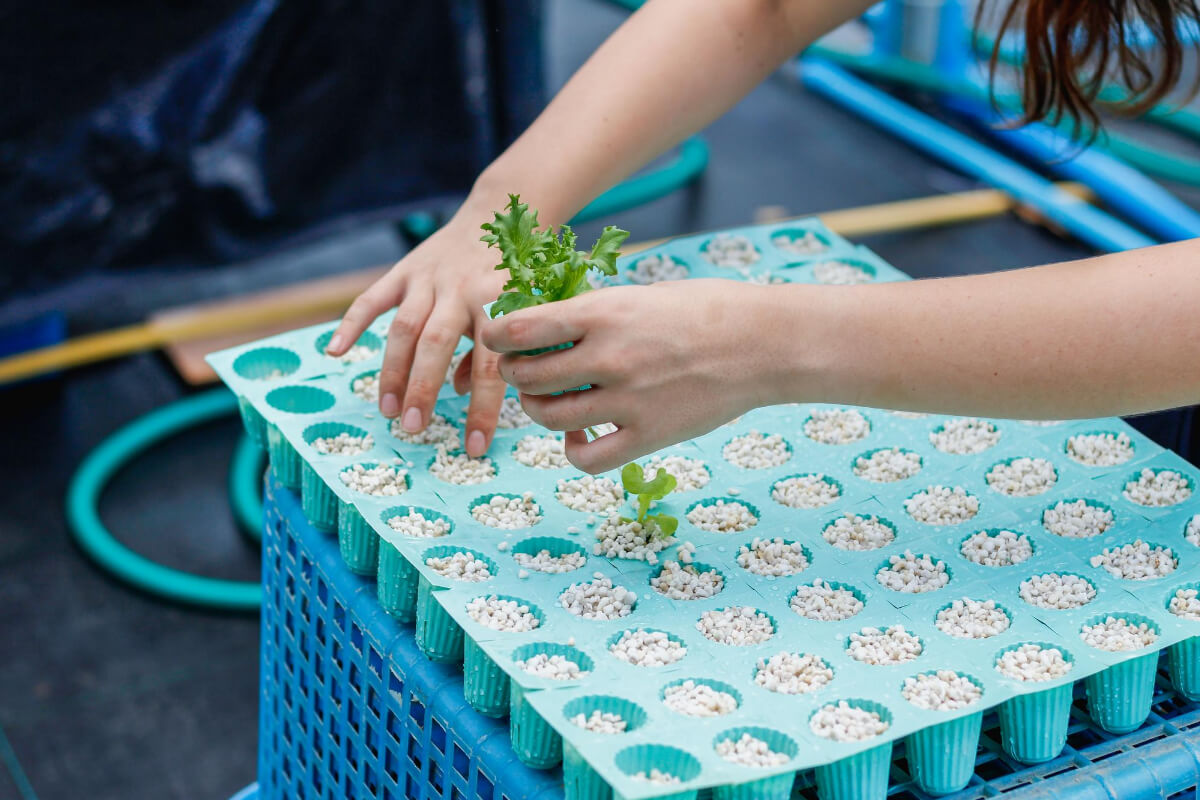
DIY Hydroponic Nutrients Final Thoughts
DIY hydroponic nutrients can be made at home with the right ingredients and knowledge. When mixing your own nutrient solution, make sure to check the pH level before adding it to your hydroponics system.
If a nutrient deficiency is present in your plants, flush out the system with soft or distilled water and add the appropriate nutrients to treat the deficiency.
With proper care and maintenance of your hydroponics system, you can ensure that your plants get all of the necessary nutrients they need for optimal health.
Read these other articles to learn more about hydroponics:

